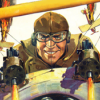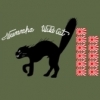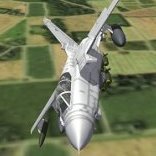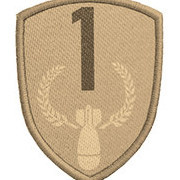Leaderboard
Popular Content
Showing most liked content on 09/09/2017 in all areas
-
7 points
-
3 pointsAlso been working on a new Pfalz D.III - a fav of VonS and myself. Click images for hi-res art.
-
3 points
-
2 pointsI'm very happy to present the new CAF team plane, the MiG-19SK. The CAF team is formed by Cocas, Wrench, Coupi, Nyghtfall, Valastur and Stratos. The MiG-19SK has been a truly team effort to deliver a fun, challenging and realistic plane for a early carrier based soviet navy squadrons. It all started thanks to Dizzyfugu, a WhatIf master, with this entry. https://www.flickr.com/photos/dizzyfugu/page22 Then everything started to move forward in the CAF team. We asked permission to Dizzyfugu to release the plane, and he kindly agreed, so kudos to him! Thanks mate! So without more waiting, the MiG-19SK story... After the success of the Soviet Union’s first carrier ship, the Moskva Class (Projekt 1123, also called „Кондор“/„Kondor“) cruisers in the mid 1960s, the country became more ambitious. This resulted in Project 1153 Orel (Russian: Орёл, Eagle), a planned 1970s-era Soviet program to give the Soviet Navy a true blue water aviation capability. Project Orel would have resulted in a program very similar to the aircraft carriers available to the U.S. Navy. The ship would have been about 75-80,000 tons displacement, with a nuclear power plant and carried about 70 aircraft launched via steam catapults – the first Soviet aircraft carrier that would be able to deploy fixed-wing aircraft. Beyond this core capability, the Orel carrier was designed with a large offensive capability with the ship mounts including 24 vertical launch tubes for anti-ship cruise missiles. In the USSR it was actually classified as the "large cruiser with aircraft armament". Anyway, the carrier needed appropriate aircraft, and in order to develop a the aircraft major design bureaus were asked to submit ideas and proposals in 1959. OKB Yakovlev and MiG responded. While Yakovlev concentrated on the Yak-36 VTOL design that could also be deployed aboard of smaller ships without catapult and arrester equipment, Mikoyan-Gurevich looked at navalized variants of existing or projected aircraft. While land-based fighters went through a remarkable performance improvement during the 60ies, OKB MiG considered a robust aircraft with proven systems and – foremost – two engines to be the best start for the Soviet Union’s first naval fighter. “Learning by doing”, the gathered experience would then be used in a dedicated new design that would be ready in the mid 70ies when Project 1153 was ready for service, too. Internally designated “I-SK” or “SK-01” (Samolyot Korabelniy = carrier-borne aircraft), the naval fighter was based on the MiG-19 (NATO: Farmer), which had been in production in the USSR since 1954. Faster and more modern types like the MiG-21 were rejected for a naval conversion because of their poor take-off performance, uncertain aerodynamics in the naval environment and lack of ruggedness. The MiG-19 also offered the benefit of relatively compact dimensions, as well as a structure that would carry the desired two engines. Several innovations had to be addresses: - A new wing for improved low speed handling - Improvement of the landing gear and internal structures for carrier operations - Development of a wing folding mechanism - Integration of arrester hook and catapult launch devices into the structure - Protection of structure, engine and equipment from the aggressive naval environment - Improvement of the pilot’s field of view for carrier landings - Improved avionics, esp. for navigation Work on the SK-01 started in 1960, and by 1962 a heavily redesigned MiG-19 was ready as a mock-up for inspection and further approval. The “new” aircraft shared the outlines with the land-based MiG-19, but the nose section was completely new and shared a certain similarity to the experimental “Aircraft SN”, a MiG-17 derivative with side air intakes and a solid nose that carried a. Unlike the latter, the cockpit had been moved forward, which offered, together with an enlarged canopy and a short nose, an excellent field of view for the pilot. On the SK-01 the air intakes with short splitter plates were re-located to the fuselage flanks underneath the cockpit. In order to avoid gun smoke ingestion problems (and the lack of space in the nose for any equipment except for a small SRD-3 Grad gun ranging radar, coupled with an ASP-5N computing gun-sight), the SK-01’s internal armament, a pair of NR-30 cannon, was placed in the wing roots. The wing itself was another major modification, it featured a reduced sweep of only 33° at ¼ chord angle (compared to the MiG-19’s original 55°). Four wing hardpoints, outside of the landing gear wells, could carry a modest ordnance payload, including rocket and gun pods, unguided missiles, iron bombs and up to four Vympel K-13 AAMs. Outside of these pylons, the wings featured a folding mechanism that allowed the wing span to be reduced from 10 m to 6.5 m for stowage. The fin remained unchanged, but the stabilizers had a reduced sweep, too. The single ventral fin of the MiG-19 gave way to a fairing for a massive, semi-retractable arrester hook, flanked by a pair of smaller fins. The landing gear was beefed up, too, with a stronger suspension. Catapult launch from deck was to be realized through expandable cables that were attached onto massive hooks under the fuselage. The SK-01 received a “thumbs up” in March 1962 and three prototypes, powered by special Sorokin R3M-28 engines, derivatives of the MiG-19's RB-9 that were adapted to the naval environment, were created and tested until 1964, when the type – now designated MiG-SK – went through State Acceptance Trials, including simulated landing tests on an “unsinkalble carrier” dummy, a modified part of the runway at Air Base at the Western coast of the Caspian Sea. Not only flight tests were conducted at Kaspiysk, but also different layouts for landing cables were tested and optimized as well. Furthermore, on a special platform at the coast, an experimental steam catapult went through trials, even though no aircraft starts were made from it – but weights hauled out into the sea. Anyway, the flight tests and the landing performance on the simulated carrier deck were successful, and while the MiG-SK (the machine differed from the MiG-19 so much that it was not recognized as an official MiG-19 variant) was not an outstanding combat aircraft, rather a technology carrier with field use capabilities. The MiG-SK’s performance was good enough to earn OKB MiG an initial production run of 20 aircraft, primarily intended for training and development units, since the whole infrastructure and procedures for naval aviation from a carrier had to be developed from scratch. These machines were built at slow pace until 1965 and trials were carried out in the vicinity of the Black Sea and the Caspian Sea. FROM NOW ON IS MY WORK. STRATOS. With the reception of the first new carrier in late 1965, the new aircraft began sea trials during the spring of 1966 and for summer the first planes were permanently deployed on board. The ship and it's planes began a cruise around the world doing good will port visits showing the flag and the new capabilities of the Soviet Navy. The carrier was permanently escorted by USN info gathering ships monitoring the capabilities of the new vessel and its air component. The first real deployment with combat ocured in the Pacific Ocean in 1969, in a dare move, the carrier slipped into the Yellow Sea during the night and launched it's aircraft at first light, the planes strike several military facilities in China mainland, specially around Shangai, and the first A-A combat took place when a pair of SK's engaged intercepting J-6 of the PLAAF while escorting strike armed SK's. All the soviets returned to the carrier that was already steaming to get out of the South China sea trough Tsushima straits. By early 1972, new models are being introduced into the fleet and the SK's started to show their age in the fast pace of aviation during Cold War, so as soon as the new models completed the air component the SK's were passed to train new naval pilots on the fleet training installations in Crimea, were it served with distinction until the last cells were too worn out to be safely operated beyond 1980. So the SK's story came to an end with the honor of being the first real combat aircraft onboard soviet carriers, and the plane that first tasted the blood for carrier based pilots. And some pictures of the plane itself. There will be several skins included in the release. The plane will be available for download pretty soon. Thanks.
-
This post cannot be displayed because it is in a password protected forum. Enter Password
-
This post cannot be displayed because it is in a password protected forum. Enter Password
-
2 pointsYou're welcome - this is a fun hobby, so everybody wins. This morning, I spent a little time on the Chinese Chirri. EDIT: Click on image below to view original hi-res image.
-
2 points
-
1 point
Version 2.3 GR.1, patch 2.3b
3,178 downloads
I used ianh755's updated V4.0 version of Dave & Sundowners original Tornado GR1 & GR4 series and F3 cockpit. All included models are optimized for . 1st, the most important thing. If you want to enjoy low level flying, you must change missioncontrol.ini file ! BACKUP ORIGINAL VALUES !!! Then use our missioncontrol, that you can find as archive in our pack. ======================================================================================= Patch 2.3 b -------------- We promise this is last patch for GR.1 ;-)) Now we are going for GR.4 . We corrected: 1) some bugs in cockpit 2) HUD (it's reworked to look more like real Tornado, thx to Fanatic Modder documentation) 3) AI attacks for british planes 4) removed Lightening pod from BL755 loadout for german ECR we added: 1) open canopy animation for cockpit view (thx ravenclaw for 3d lessons) PRESS -> SHIFT + 3 to see animation. 2) missed oil pressure indicators Patch 2.3 a -------------- We corrected: 1) Problem with wing tip vortex 2) Rudder secondary input 3) Landing speed 4) SPILS system settings 5) Fuel quantity for Saudi GR.1 6) Engines altitude power tables. 7) missing outer wing weapon stations for GR.1 82 8) ECM for brit and saudi planes moved back to pods from fuselage. we added: 1) New Sky Shadow 3d model We also did some small lift for steering sensitivity. ======================================================================================= Fanatic Modder's and Guuruu's Tornado GR.1 version 2.3 ------------------------------------------------------------------------- So, This is really serious upgrade . Only Tornado GR.1, IDS and ECR are in this pack. What is new ? ------------------- We tried to get flight model as close to real Tornado as possible, so aerodynamic model is new . All planes have correct (reworked) engines, wing-sweep positions, max G for turning and new cockpits (with lots of working lights). We tested their acceleration, fuel consumption (it's still not perfect but better it was), turning and climb rate. We also added correct skin for Italian IDS 81 . Weapons are no longer separate download, also missioncontrol.ini is inside of pack. We decided to remove GR.4 from this files. She is far from finish and will be published as separate files. You will find 11 planes in this pack: RAF: ----- GR1 82 Early production GR1 90 Better engines, more weapons than 82 model (in fact it is GR.1B with Sea Eagles) I thought there is no sense to create same plane with only +Sea Eagles. GR1 90 DESERT STORM Simply GR1 90 with desert camo (plane and weapons) GR1A Recon version of GR1 90 Luftwaffe: ------------ GERMAN ECR HARM armed Tornado with Mk.105 engines GERMAN IDS 79 similar to GR1 82 GERMAN Marineflieger IDS (with Kormorans and HARMs) GERMAN IDS 06 which is continuation of Marine IDS after they were transferd to Luftwaffe. Italians: --------- ITALIAN ECR as german ECR but Italians didn't replace engines for Mk.105 and they use GPS JDAMS ITALIAN IDS 81 very close to german IDS, can use JP233 insteed MW1 Saudi Arabia: ----------------- SAUDI GR1 93 similar to british GR1 90 SKINS: -------- Every plane has only 1 skin. INSTALLATION: -------------------- We higly recommend to remove/backup all earlier versions of OUR(!) GR.1 or ECR Tornadoes. Then unpack this download and copy/paste (overwrite if needed) all files to your MODS folder . CREDITS: ------------- ALL CREDITS GOES TO: ianh755 Dave & Sundowners for great job they did with all previous versions ravenclaw_007 for WE-177, new weapons and german Tornadoes loads. Dave (again) for B61 bomb and nuke explosion from his B1B pack Sundowner (again) for Cockpit background comms sounds Jarhead1 for F3 cockpit bobrock for Tornado F3 and everybody we forgot ;-) Thx guyz. ALL BUGS ARE OUR . -
1 point
-
This post cannot be displayed because it is in a password protected forum. Enter Password
-
1 pointOf course it is a What if bird and i love it. Would like to fly it as fast as possible. Good job. Now to your arguments. If you look to the Q-5 air intakes. They are placed much more forward as in your 19SK. So is no real danger, that gun smoke comes into the engines. And the inner wing pylons of the Q-5 are not as close as the 19SK pylons, which looks like MiG-17F pylons. But away with my critics. Your MiG-19SK is great!!!!
-
1 point
Version
113 downloads
What is it? It's a paintscheme for the FA-18E Super Hornet of the Belkan Air Force, 10th Air Division, 8th Tactical Fighter Squadron "Grun", from the game Ace Combat Zero. For FA-18E only. The Belkan Air Force 10th Air Division, 8th Tactical Fighter Squadron "Grun" was an air unit that operated four F/A-18C Hornets. Their combat style was flexible, making them somewhat unpredictable. Their aircraft, the F/A-18C Hornet, is perfect for their ever changing role since it is capable of taking on any role it is pressed into. The pilots specialized in close in fighting and monitoring their enemy's movements in order to defeat them. Grun One - Bernard "Owl" Schmidt Status: Alive Nationality: Belkan His uncanny ability to read the tide of battle earned him the name of Green Owl. He was shot down over Area B7R during an encounter with mercenary Ustio pilots. After retirement, he later returned to his hometown where he continues to reside. Grun Two - Fabian Rost Status: Shot Down/Alive Nationality: Belkan His whereabouts became unknown after the conclusion of the Belkan War. Information has surfaced reporting that he is now acting as a volunteer soldier in an effort to free a small eastern country from its authoritian government. Grun Three - Wif Scholl Status: Killed in Action Nationality: Belkan He was enlisted in the Belkan Air Force after graduating from the Belkan Air Force Academy top of his class. For his first actual war mission, he was reunited with his former unit of the 10th Air Division 8th Tactical Fighter Squadron, but was shot down during his 23rd assault. Grun Four - Fritz Forster Status: Killed in Action Nationality: Belkan Recruited as a test pilot by the Belkan Air Force where he gradually began to distinguish himself through his extraordinary flying skill. Shortly after the War's outbreak, he was officially assigned to the front lines, where he was killed in action a few months later. His remains have yet to be recovered. I've chosen the FA-18E Super Hornet over the F/A-18C for this skin due to it's increased versatility, something I'm sure Bernard Schmidt would've appreciated. Which addon(s) are required? Super Hornet Package for SF2 v4.1 by EricJ (Link to File) (You will also have to add a new nation Belka into nations.ini, instructions inside) Credits Skin and Decals : Zachtan1234 Template : EricJ (Link to Template) Check out my other work : F-16C Windhover Squadron (Ace Combat 6) F-15C Galm Team (Ace Combat Zero) F-22A Gryphus Squadron (Ace Combat X) F-5E Wardog Squadron (Ace Combat 5) F-15E Sorcerer (Ace Combat Zero) JAS 39 Gripen-C Indigo (Ace Combat Zero) F-14D Schnee (Ace Combat Zero) YF-23A Wizard (Ace Combat Zero) F-22A Aggressors (Fictional) F-4E Mobius (Ace Combat 4) Eurofighter-GmbH EF-2000 "Typhoon" Rot Team (Ace Combat Zero) -
1 pointIn my past experience A-10C has similarities to learning the F-16C in BMS in terms of learning the avionics and how to fire the weapons, using the TGP, A-A refueling etc etc and you will likely still be learning new things even after years of perseverance in both cases. On the other hand, It is relatvely easy to take off/Land / hit ground targets and has a very accurate gun. Spitfire Mk9 / P-51 are in comparison very easy to startup and remember the very few cockpit controls............however trying to takeoff and land in a taildragger (Spitfire mainly) is very difficult even after a lot of control tweaks, and you have all that engine management business in flight. MiG-15bis / F-86F is easy to fly and easy to startup, hitting anything with guns however can be challenging and so is bombing. Mirage 2000C........easy to fly but lots of radar modes and avionics switches a few French words to get heads round with INS only (no GPS) that requires manual Lat/Long input and manual updates in flight. Then there is 1980s combat with naff SARH missiles like R530D that I generally avoided in the past. MiG-21bis...never seen so many switches but after a while not bad to operate and the radar has a few vices...the main thing to learn in this aircraft is how to restart the engine in flight..or even flying to negate flaming it out. F-5E......Easy to fly, simpler than Mirage in terms of avionics but manual bombing modes to practise. The upcoming FA-18C is probably like the A-10C, whereas the F-4E and F-14A could be trickier F-5Es with the extra manned or AI GIB option. If you have the time choose the one you like the most and ideally the most challenging where you will learn something.
-
1 pointNice bird. Really cool. I love the blue camo very much. But some remarks. In real life you wont be able to carry rockets and missiles on the inner pylons. The launch of these would cause engine stalls, if the smoke of the rockets comes into the engines. With the MiG-17 it was possible because it used radial compressor engines whiche are less vulnerable against smoke. The same issue is with the guns. You come in danger that gun smoke is coming into the air intake and you get engine stalls. To use the GP-9 gunpod under the fuselage would solve it. The UB-32 rocket pod (in game UV-32) is to heavy for outer wing pylons.
-
1 pointOn the subject of location, this is where I live. I put up with idiots for 20 years so I could retire 400 miles away from the closest big city (Denver).
-
1 pointhalf the stuff on the 1stGen cockpit dosen't even work. maybe one from Stary's Generic cockpit pack?? required screen shot:
-
1 point
-
1 pointfinally getting moving on this one..... but first some skin prep. something in a vintage 80s ADC grey.......
-
1 point
-
1 pointEven though we don't have a (real) map for this to fly on, I though it would be "something different"
Important Information
By using this site, you agree to our Terms of Use, Privacy Policy, and We have placed cookies on your device to help make this website better. You can adjust your cookie settings, otherwise we'll assume you're okay to continue..



















